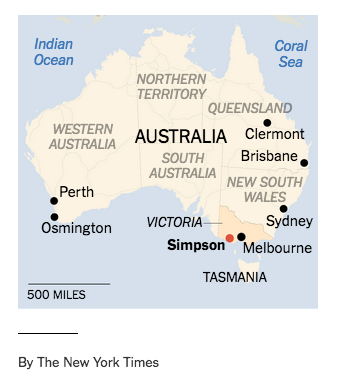NY Times: A Booming Economy With a Tragic Price
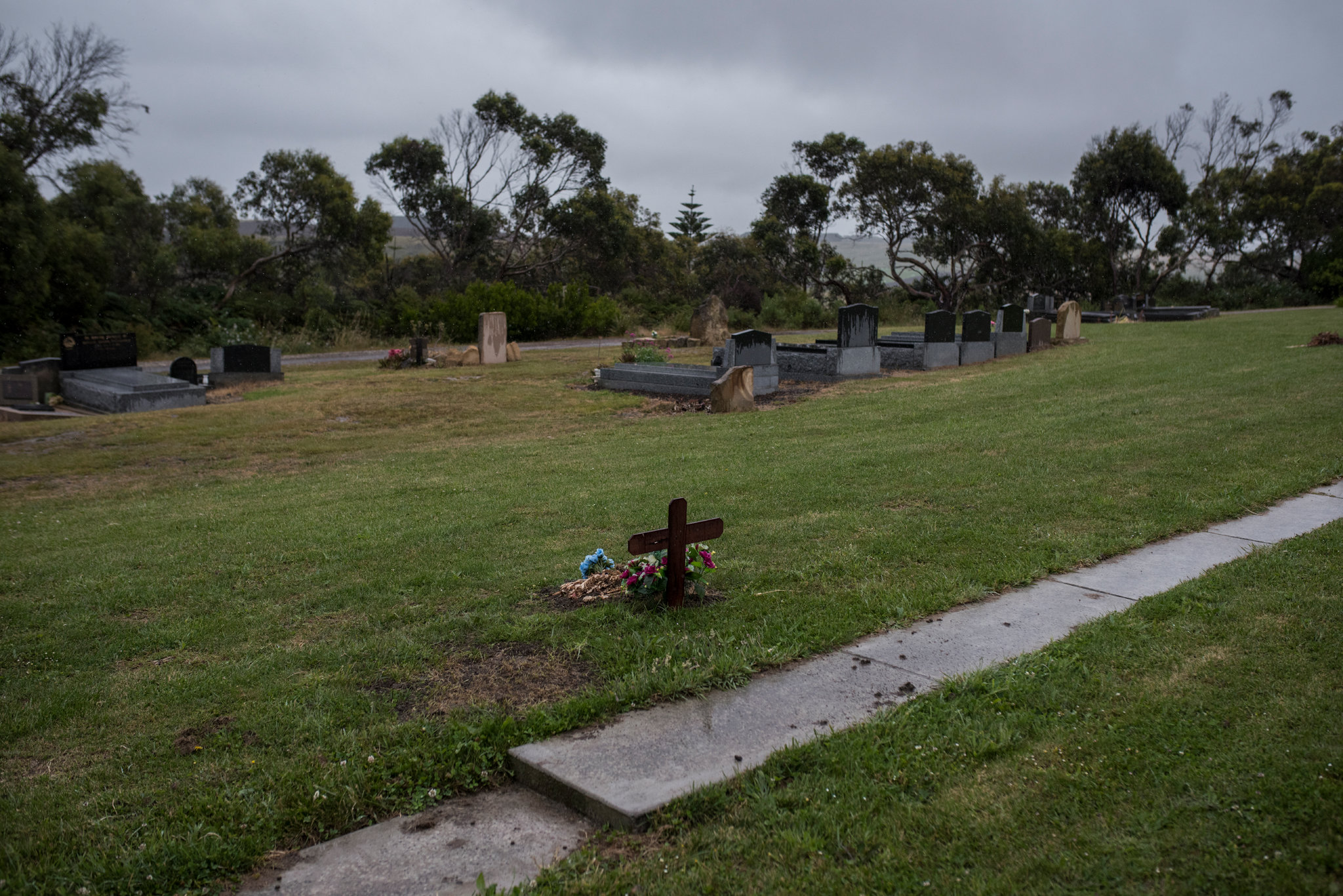
The grave of James Guy at a cemetery in the Australian state of Victoria. Mr. Guy hanged himself on the dairy farm that he owned with his wife, Mary. Credit: Adam Ferguson for The New York Times
by Jacqueline Williams | May 20, 2018
Australia is a breadbasket to the world and a globalization success story. So why are its farmers killing themselves?
SIMPSON, Australia — James Guy had been a dairy farmer since he was 15, and at 55, he thought he’d be preparing for retirement. Instead, he struggled to make the payments on a bank loan after the price of milk fell and never recovered.
One night in November 2016, his wife, Mary, who was working part-time as a nurse to help make ends meet, came home to find he had hanged himself.
“When a farmer is looking down the barrel of having to sell his farm or lose his farm or give up the profession he’d done all his life, it’s devastating,” Ms. Guy said, her voice wavering, from her farmhouse in Simpson, a town in Australia’s dairy heartland of Victoria. “They just lose their identity.”
Family farms like Mr. Guy’s have been the producers of Australia’s agricultural bounty, and the bedrock of its self-image as a nation of proudly self-reliant types, carving a living from a vast continent. But as Australia’s rural economy has boomed on the back of growing exports, small farmers have not always shared in the bounty, with many forced into borrowing money or selling their farms.
The emotional cost of these losses has become visible in a slowly unfolding mental health crisis in rural regions, seen most tragically in a rising number of suicides.
Nationwide, people living in remote Australia now take their own lives at twice the rate of those in the city: Every year, there are about 20 suicide deaths per 100,000 people in isolated rural areas, compared with 10 in urban communities, according to independent studies of local health figures.
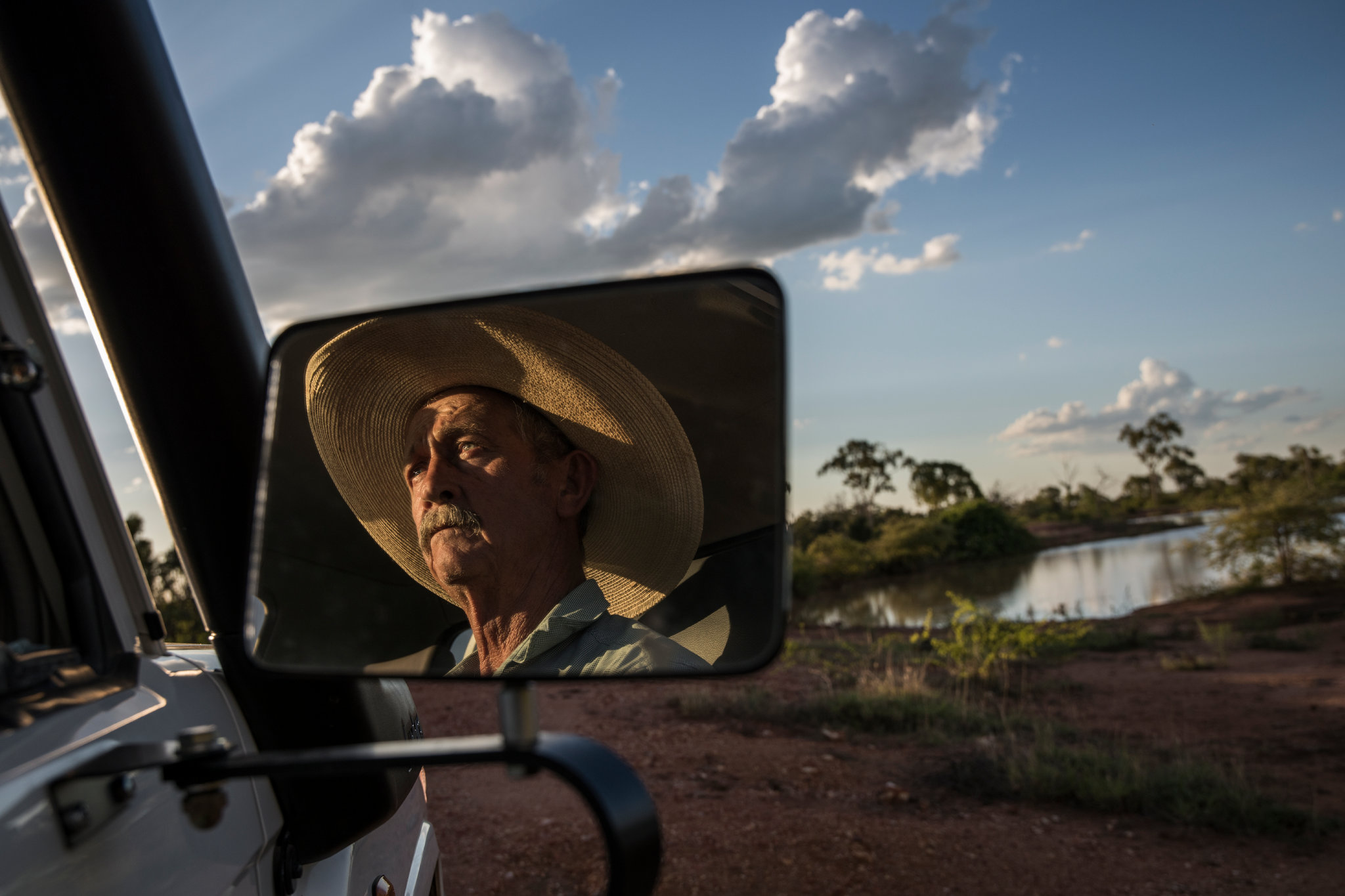
Jim Whelan, a cattle farmer, at his mother’s property near Charters Towers, in northern Queensland, Australia. Mr. Whelan has struggled with depression and the difficulties of farming through drought. His son, also a farmer, killed himself in 2013. Credit: Adam Ferguson for The New York Times
In very remote parts of the country, the figure is closer to 23, the studies say.
The horrific potential of this mental health crisis burst into public view this month in the tiny town of Osmington, south of Perth, where a grandfather is believed to have killed six members of his family and then himself after they reportedly fell into economic difficulties.
But most of the tragedies involve someone quietly taking his own life. Research shows that farmers are among those at the highest risk of suicide.
In the state of Queensland, studies have shown that farmers are more than twice as likely as the general population to take their own lives. In remote parts of the state, the suicide rate for farmers was up to five times that of nonfarmers.
“There’s a mental health crisis in rural Australia,” said Hugh van Cuylenburg, the founding director of the Resilience Project, an organization that promotes mental health across Australia. He added that it had reached “epidemic proportions.”
The problem of rural suicides is not unique to Australia. Countries as diverse as India and France also face problems of farmers killing themselves. In the United States, suicides have been increasing since 1999, as an opioid epidemic has also disproportionately struck poor and rural areas.
But in Australia, the crisis seems to be worsening at a time when, at least on paper, the rural economy is quite robust.

Residents of Clermont, Australia, at a men-only gathering in October to discuss suicide and mental health problems in rural communities. The vast majority of rural Australians who take their own lives are men. Credit: David Maurice Smith for The New York Times
It is also an epidemic that few Australians fully recognize, even in rural areas.
Experts say social stigmas prevent many people from talking about mental or emotional difficulties. This is particularly true in rural Australia, where the majority of farmers are men, who are expected to display an image of rugged individualism.
Men represent the vast majority of rural Australians who kill themselves. according to experts.
The problem is compounded by the difficulty of getting help. With just a small number of mental health centers and trained professionals scattered across Australia’s vast rural areas, residents are only able to access mental health services at a fifth of the rate of city dwellers, according to a 2015 report by the Center for International Economics in Canberra.
Mr. Cuylenburg of the Resilience Project, who travels around Australia giving talks on ways to improve mental health, says he finds the biggest need in rural areas.
On a recent trip to Clermont — a remote town of about 2,000 people that’s an 11-hour drive north of the city of Brisbane — he said hundreds of people showed up to hear him speak. Many came up afterward to share their stories about suicide attempts, their own or those of friends.
“There are always issues around mental health everywhere I go,” Mr. Cuylenburg said. “No one talks more about suicide, no one seems to be more affected by the numbers of suicide, than in the rural parts of Australia.”
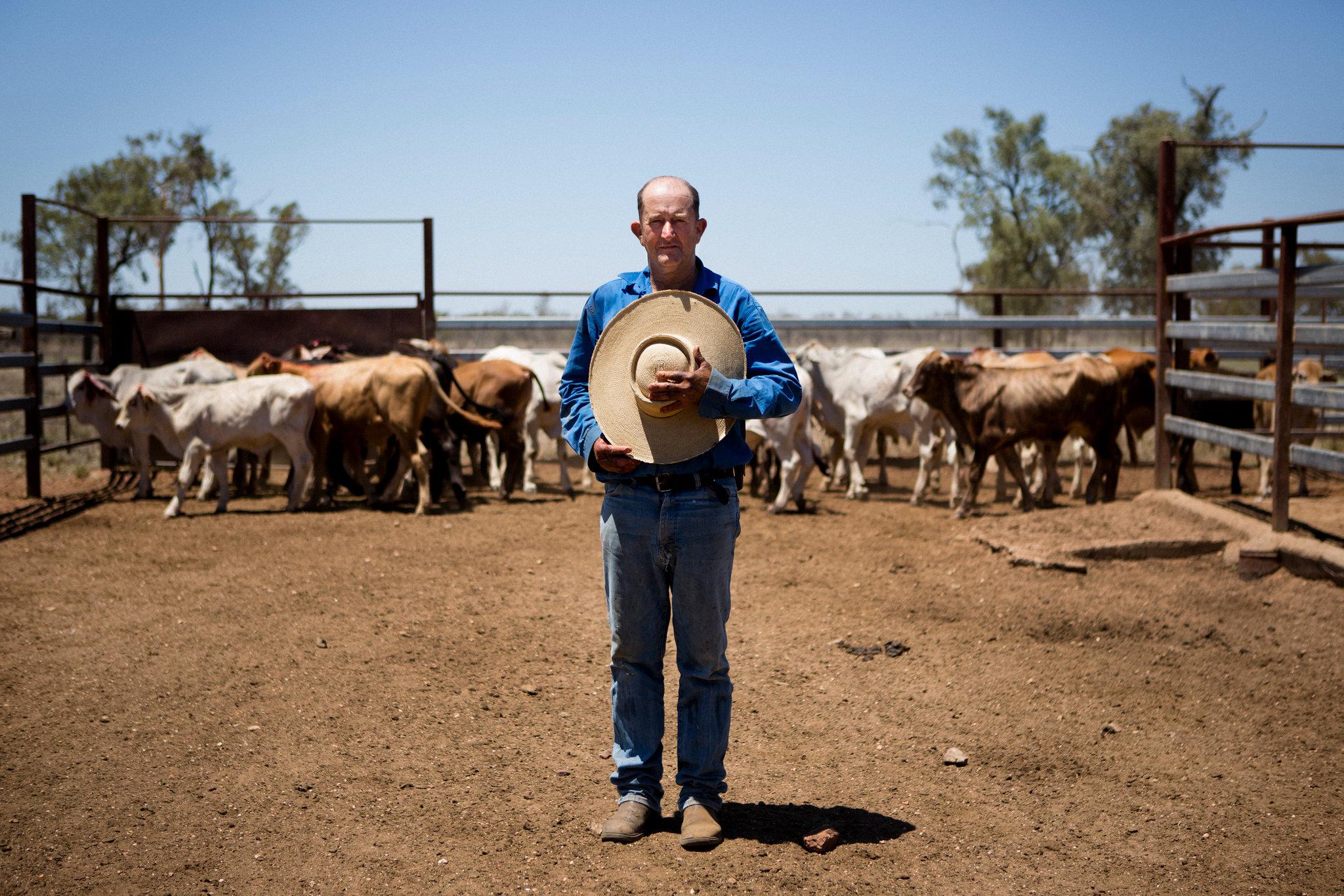
Andrew Fernie on his farm outside of Clermont. Mr. Fernie has suffered for years from depression and other health issues, for which he has been treated with medication and therapy. Credit: David Maurice Smith for The New York Times
The problem has become so severe that rural communities have gone on suicide watch. In some towns, residents have compiled lists of warning signs such as sudden withdrawal from society.
Despite such community-based steps, many cases require professional care.
“If prevention and treatment services got to them earlier we’d see less deaths,” said Martin Laverty, chief executive of the Royal Flying Doctor Service, one government-backed effort to improve access to health care in rural areas.
The service relies on small planes to cover some three million square miles of the most rural parts of Australia, flying in doctors and other professionals who offer basic and emergency care.
But Mr. Laverty said the service is spread too thin. Last year, it provided almost 25,000 people with mental health counseling.
New federal funding will allow it to triple that number next year, a sign of how dire the situation has become. But Mr. Laverty said even that will barely scratch the surface of the problem.
“There’s no more important topic,” Mr. Laverty said. “We need to make city folk aware that the food bowl of Australia — the area in which our crops are grown, and our milk and meat is provided — needs their support.”

Dairy farmer Phil Vines milks cattle on a farm near Simpson, Australia. Mr. Vines rents the farm from Ms. Guy, whose husband hanged himself after milk prices dropped. The low prices also prevent Mr. Vines from turning a profit. Credit: Adam Ferguson for The New York Times
The causes of rural Australia’s crisis vary. Some farming areas have been pummeled by drought, which many blame on global warming. Other communities, like Pyramid Hill, Victoria, have desperately needed workers and are turning to immigrants for help.
But economists and mental health experts say a common thread is the changes unleashed by a globalizing economy.
There is a painful irony here, they say, since Australia has embraced free trade in farm goods, and even pressed other nations to liberalize their markets, in the belief that agriculture is one of its most competitive industries.
And Australian farm exports are growing: Last year, they totaled 44.8 billion Australian dollars, or $33.5 billion, up more than a fifth from just six years earlier, according to the National Farmers Federation.
But many experts say the biggest beneficiaries are larger corporate farms. Family farms are less able to ride out fluctuations in far-flung global markets that can drive down prices of their crops while raising the cost of tractor fuel.
Brian Sporne, a cattle farmer in Clermont, said people in the area had been working themselves “into a frazzle.”
“Everything is so competitive now,” said Mr. Sporne, a strong man with worn hands who raises his herd on a dry landscape of low scrubs and sandy orange earth. Mr. Sporne said he himself has suffered from depression. “Everything’s more expensive — land’s more expensive, then you’ve got to have bigger debt.”
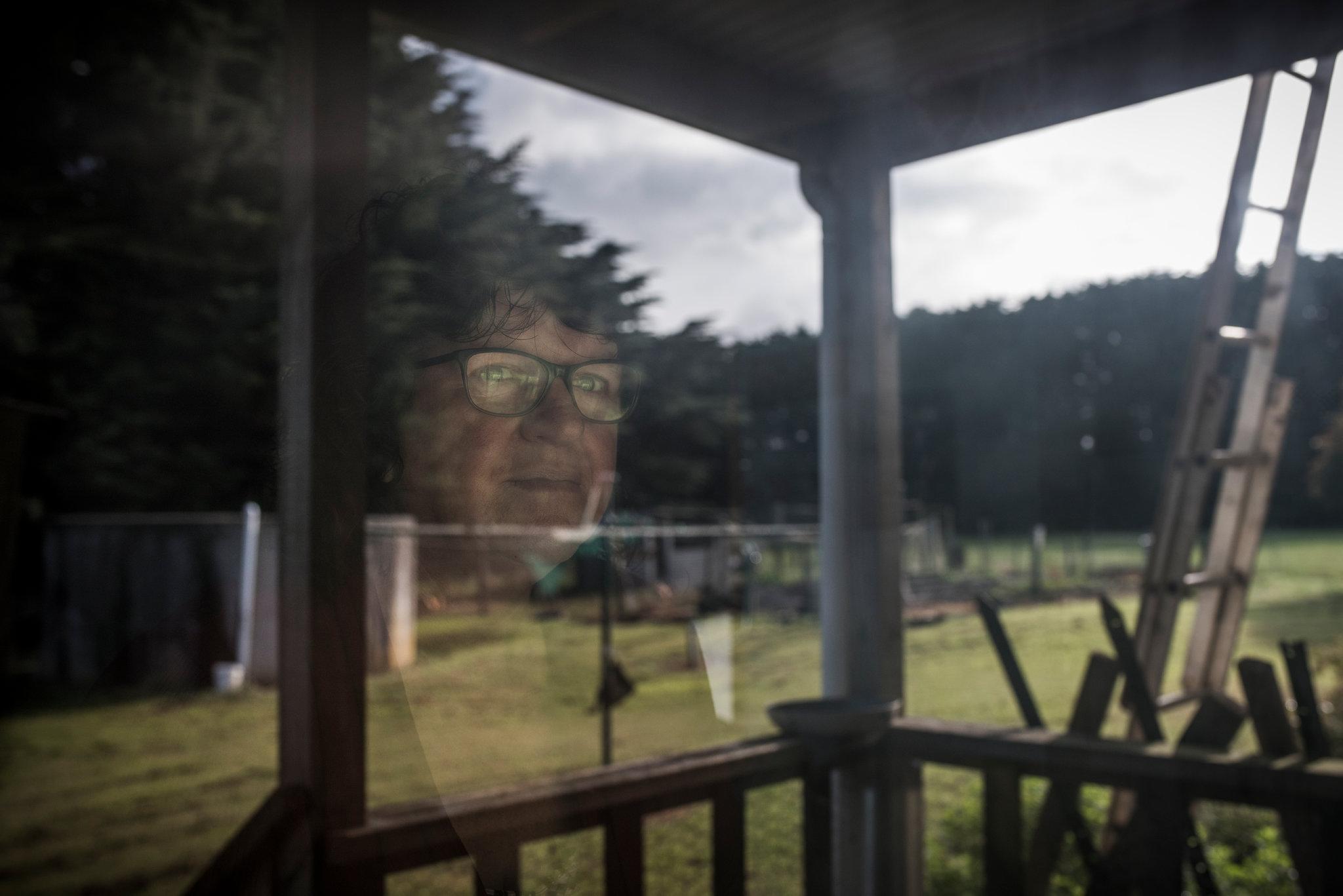
“This is happening to more and more people, and it’s not their fault,” said Mary Guy, who still lives on the property where her husband took his life. Credit: Adam Ferguson for The New York Times
Farms are forced into debt to make ends meet. Across Australia, total borrowing from banks by farmers has ballooned to about 70 billion Australian dollars, or about $53 billion, seven times the level in the early 1990s, according to the Australian Farm Institute.
When they can no longer make the payments, many farmers go bankrupt. Across Australia, the total number of farmers declined by about 40 percent over the 30-year period ending in 2011 — a loss, on average, of 294 farmers every month.
Losing a farm is more than just losing a place of work. The properties are also homes that have been in families for generations.
Farmers speak of losing their sense of purpose, even their will to live.
Faced with the prospect of losing his farm, something inside James Guy simply broke, his widow said.
“This is happening to more and more people and it’s not their fault,” said Ms. Guy, who now rents out part of the farm but still lives on the property. “People are slowly disappearing because we’re being squeezed out.”
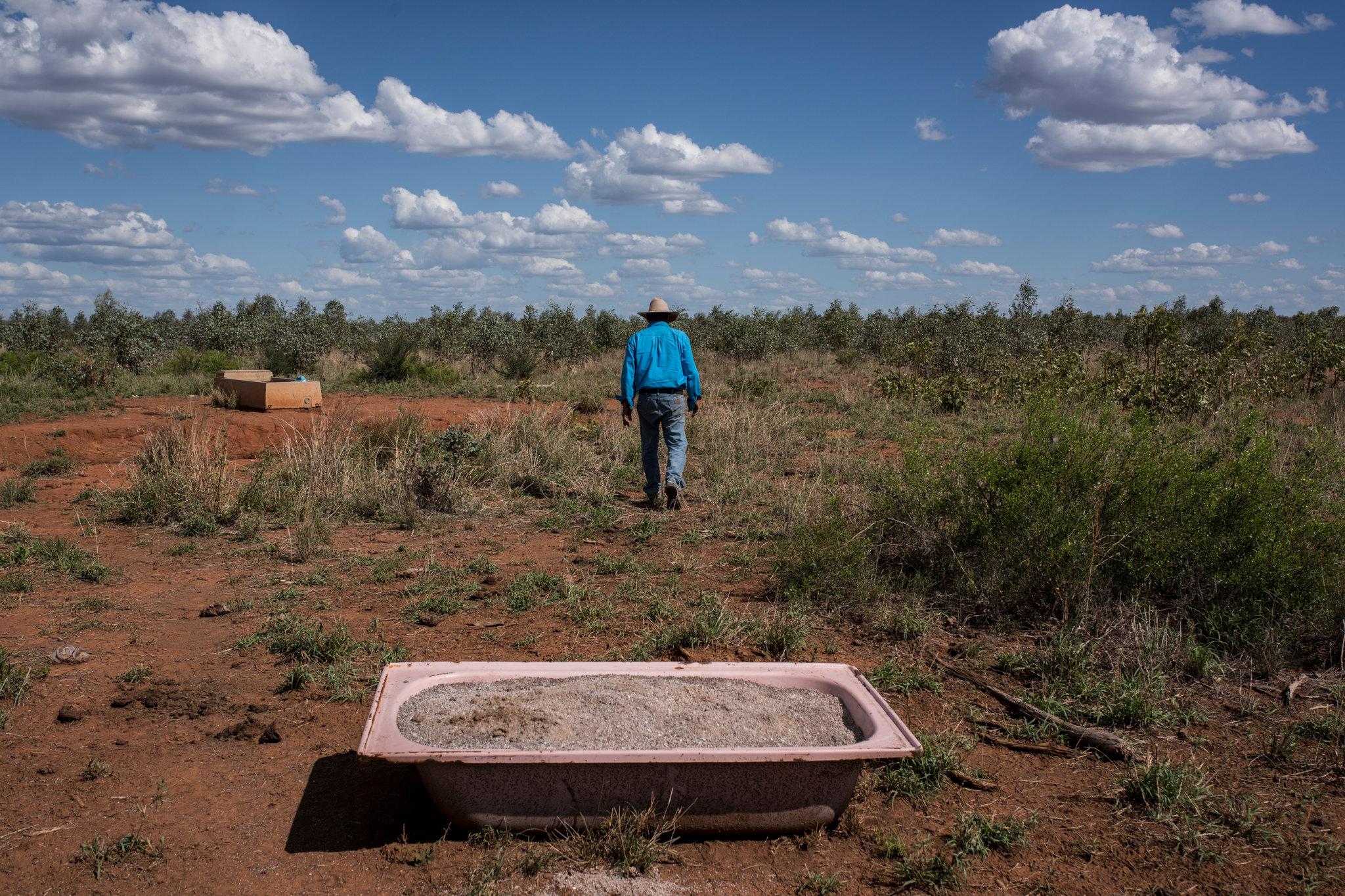
“Everything’s more expensive — land’s more expensive, then you’ve got to have bigger debt,” said Brian Sporne, a Clermont cattle farmer. People have been working themselves “into a frazzle,” he said. Credit: Adam Ferguson for The New York Times
If you or someone you know needs help, support can be found in your area by clicking here: the International Association for Suicide Prevention. In Australia, call Lifeline on 13 11 14.

